You may not find this terribly rewarding unless you're included here, so this is a good time for casual and random browsers to turn back before they get too caught up in the sweep and majesty of the proceedings and can't let go.
25 February 2019
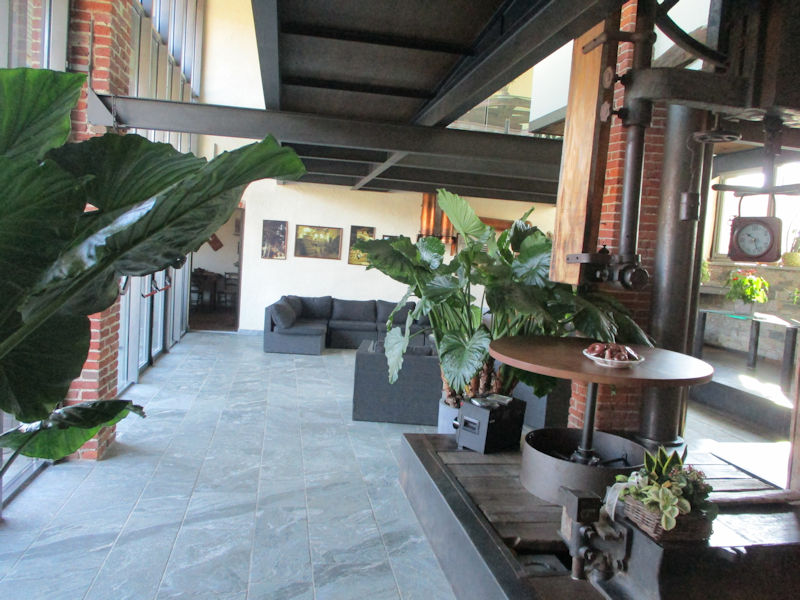
An earlyish start on a fine day at the Vecchio Mulino in Bairo, 25 February 2019
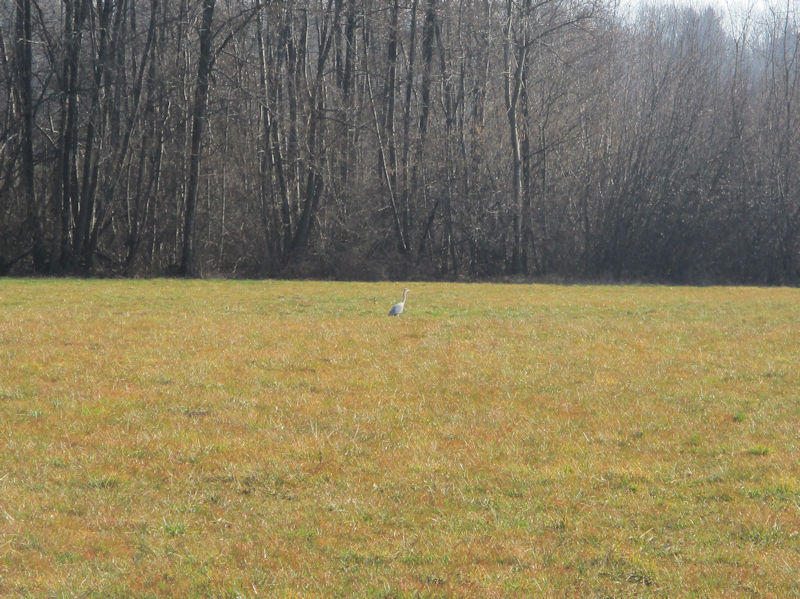
A lonely heron
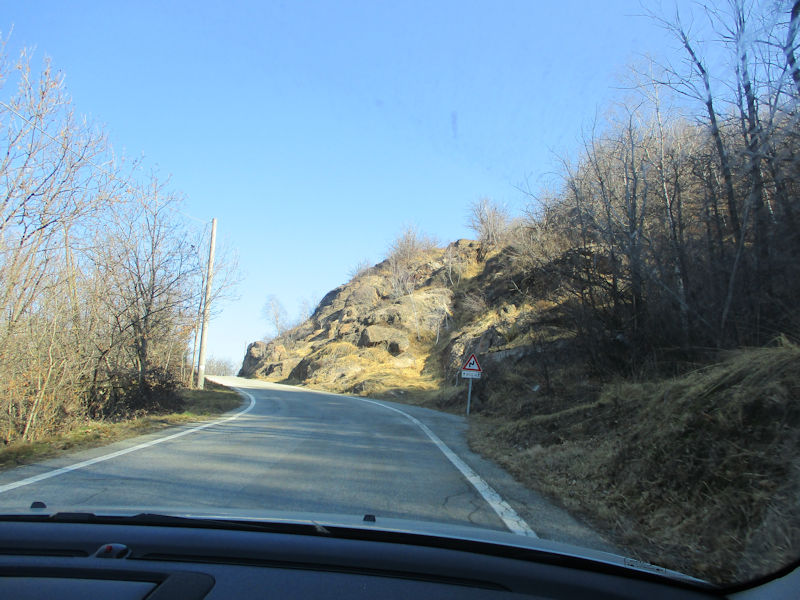
We've been looking all over for the Sacro Monte of Belmonte, so far in vain, but now we're on the right track.
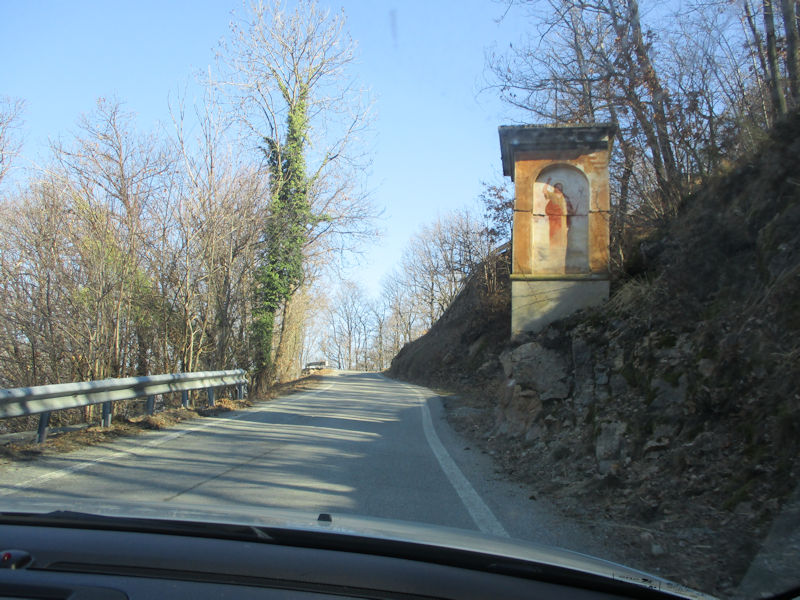
And it's looking more and more promising.
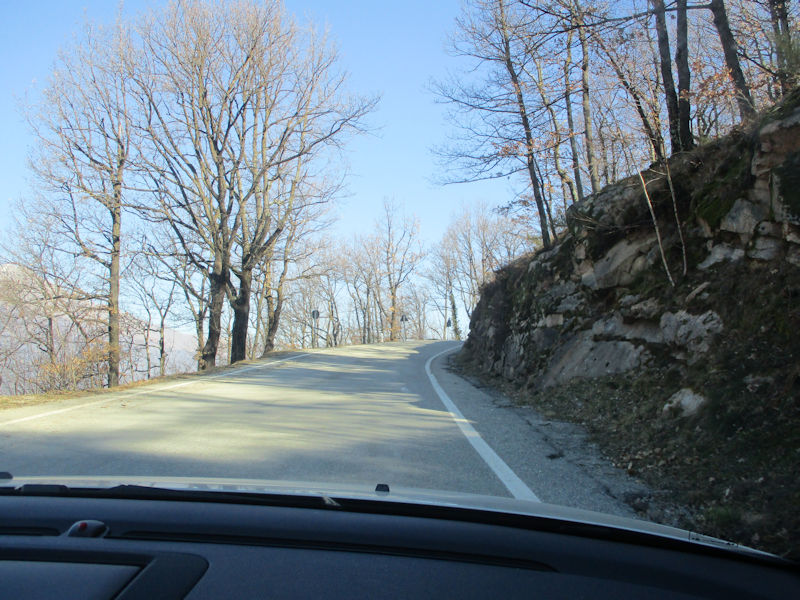
The tradition of the Sacri Monti began in about 1490, when the Rector of the Palestinian holy sites, Bernardino Caimi, a good friend of Ludovico "Il Moro" Sforza, the Duke of Milan, came home with a plan to build a replica of Holy Land pilgrim destinations on a small mountaintop in Varallo in the Piemonte. There are presently nine of these installations strewn about northern Italy.
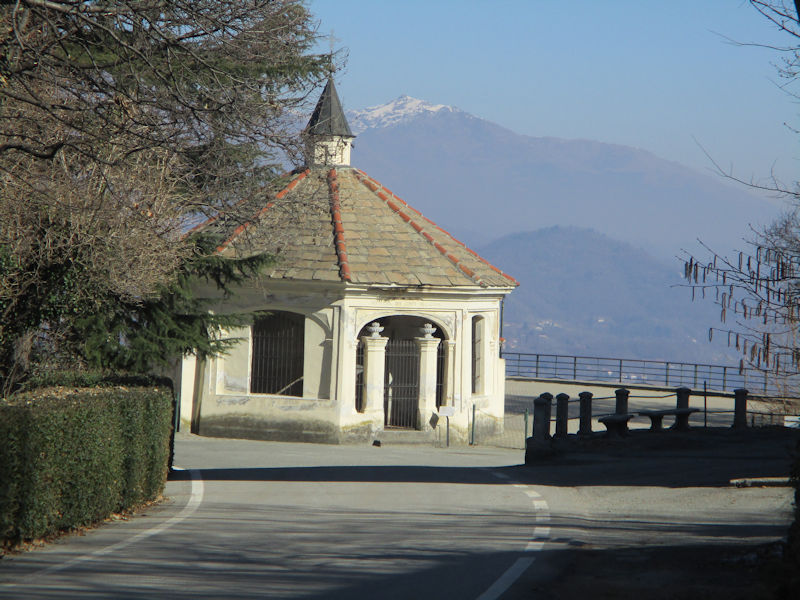
This handsome thing, stuck out here in about 1800 to give the pilgrims tramping up the mountain something to shoot for, is the Sepulchre of the Counts of Valperga, an octagonal chapel of St 'Simeone Stilita' (Simeon Stylites) now home to members of the Valperga dynasty from the 19th century. (Various branches of the Valperga family were important in the area from ca. AD 1000 onward -- we visited one of their castles a few years ago, the Castello di Masino, south of Ivrea.) (Mary Shelley borrowed the name Valperga for her 'historical' novel, 1823, but the name was picked at random by her dad and is unrelated to this family.)
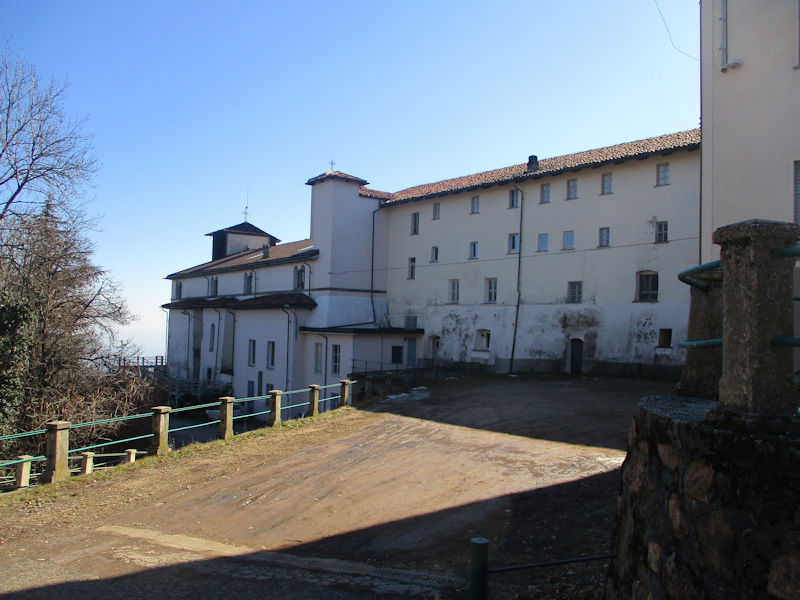
Legends ascribed the foundation of the Santuario di Belmonte to Arduin, King of Italy, who in AD 1000 thus expressed his gratitude to the Virgin for his recovery from an illness. Certainly, though, by some time in the 11th century, there was a Benedictine cell of nuns here dependent upon the important Abbey of Fruttuaria 20km to the south. In 1601 the nuns decamped to Cuorgné (according to the info panel here, at the Vatican's direction); the Franciscan friars moved in and substantially enlarged the convent and church. It's been chiefly a place of pilgrimage ever since.
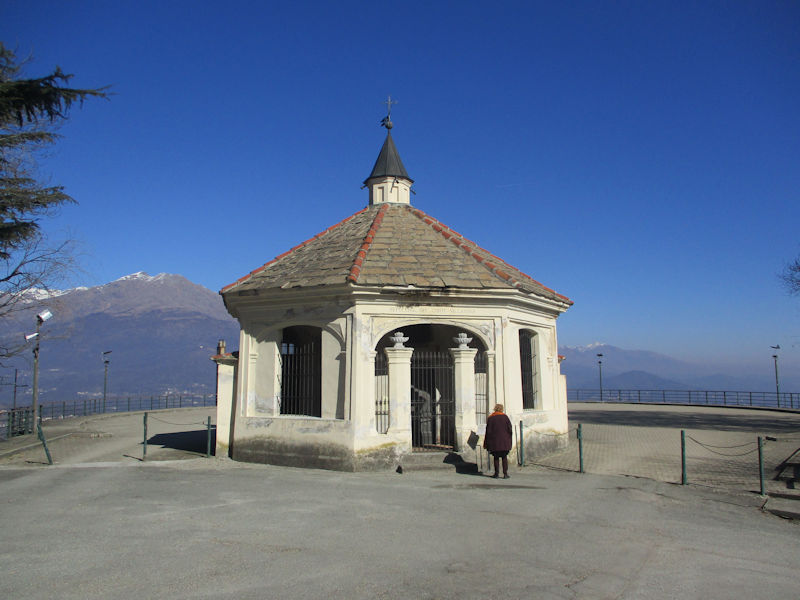
In fact, it was the Valperga family who invited the Franciscans to take over here in 1602.
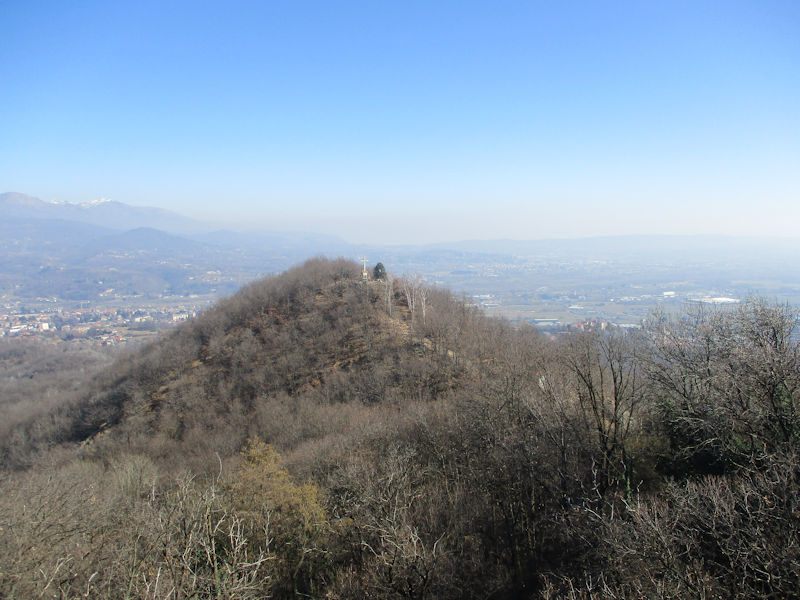
The Sacro Monte complex is laid out in a loop running out and back along a ridge some 600m from the Sanctuary southwestward, as seen here, at about 700m asl above the town of Valperga.
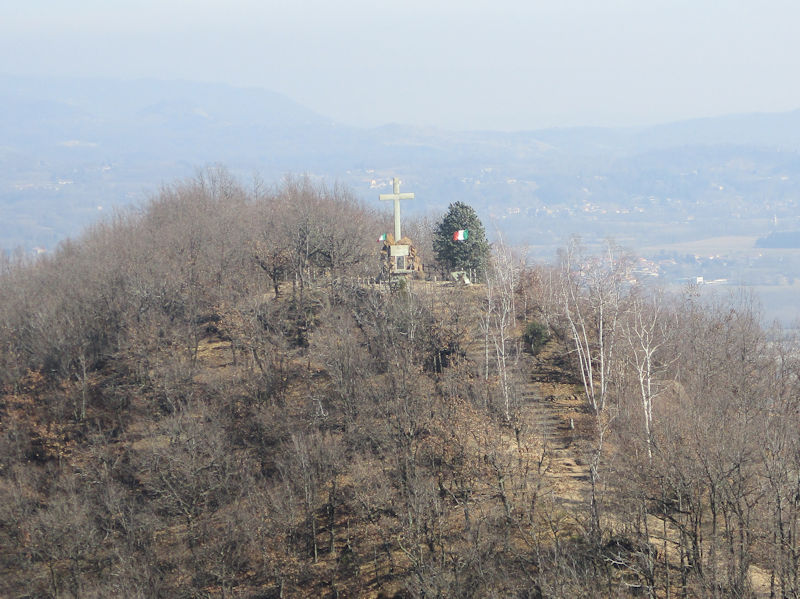
In addition to the Sanctuary, the complex comprises thirteen similar chapels, each with a round or quadrilateral hall and a front portico or narthex, peopled by terracotta painted statues and frescoes illustrating the so-called Mysteries of the Rosary from the life of Jesus.
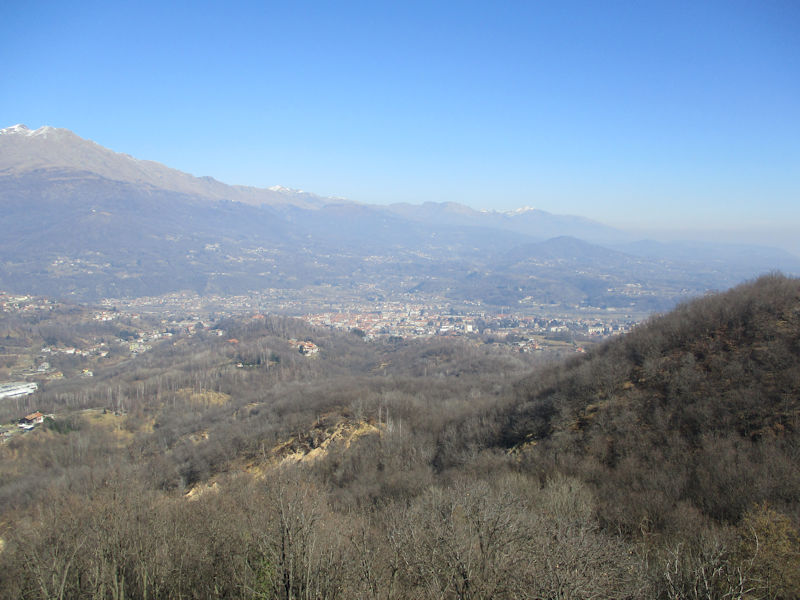
Nearby towns in the Canavese region -- that's likely to be Cuorgné (where, coincidentally, we had a nice dinner some hours later), about 3km to the northeast . . .
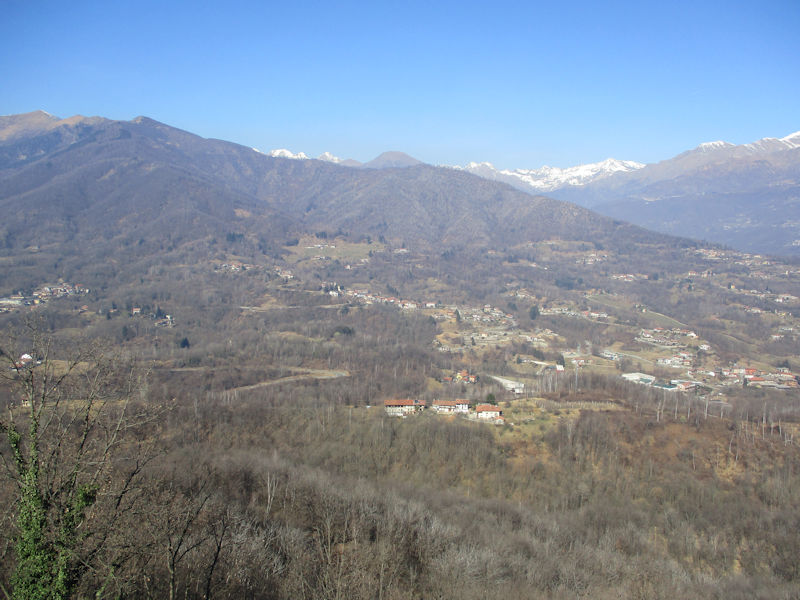
. . . and there presumably are the Alps of the Parco Nazionale Gran Paradiso to the northwest.
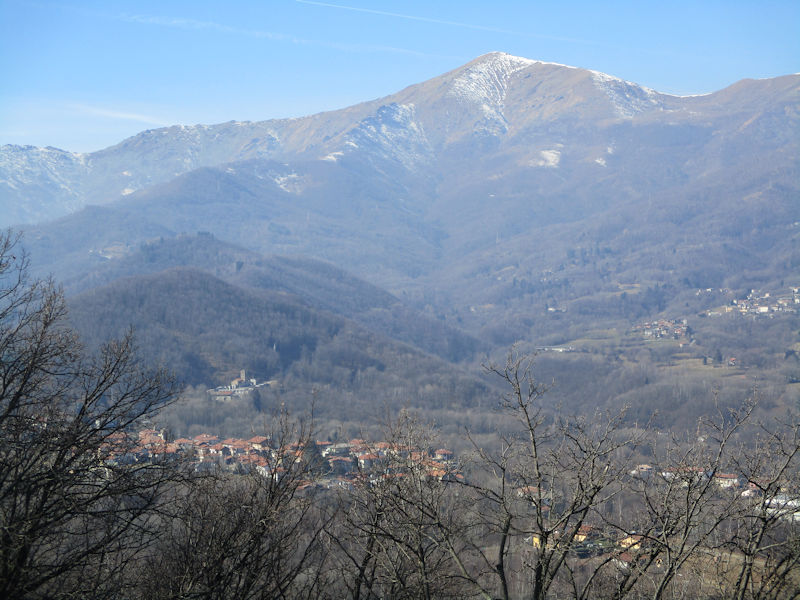
Prascorsano to the west, perhaps. This particular Sacro Monte complex was founded by the Franciscan friar Michelangelo da Montiglio who'd been to the Holy Land and, beginning in 1712, set about creating these representations of the gospel stories and legends in terracotta statues and frescoes, in order to grab the imaginations of a largely illiterate populace with lively, evocative scenes. With a few interruptions, the works were added to (and repaired) over the years and finally completed in 1825, evidently, but the original architectural themes have been carried out consistently throughout.
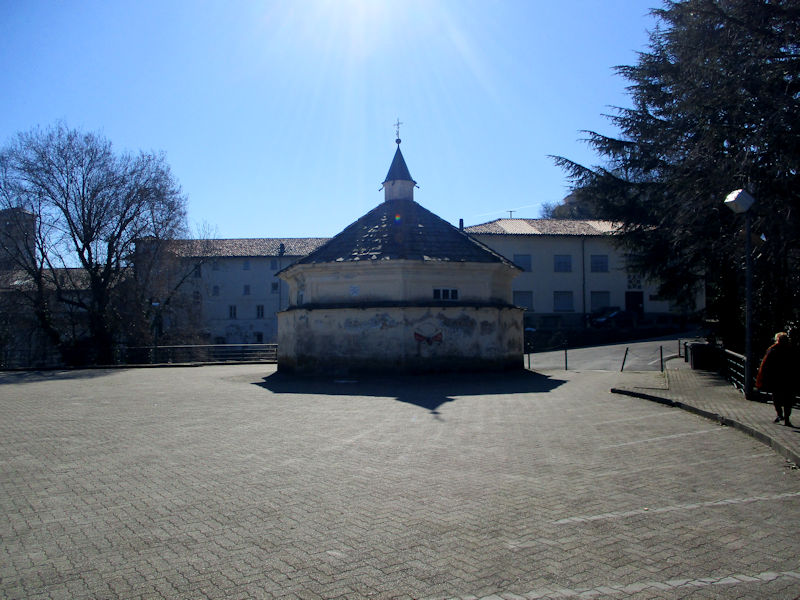
To the right of the Valperga Chapel is the Casa del Pellegrino or pilgrims' hostel, and the church appears to be on the far left, facing east.
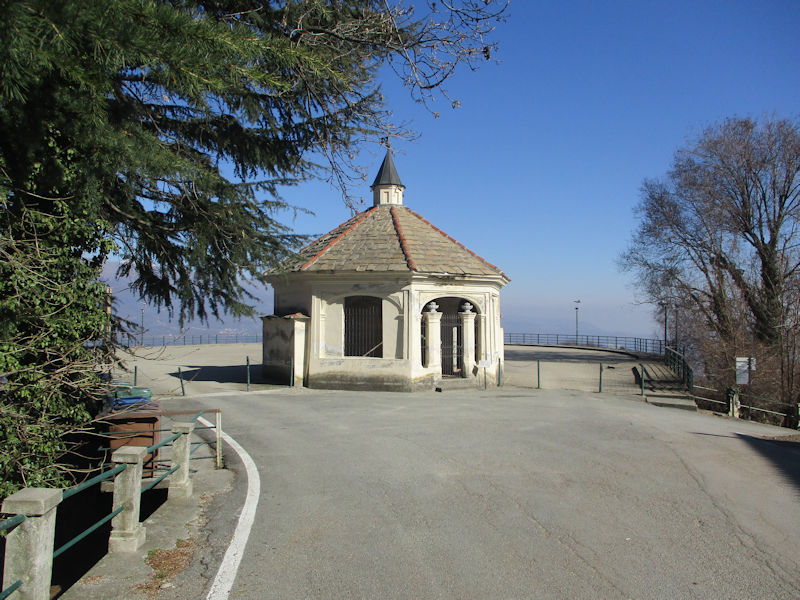
On the model of the first Sacro Monte, begun above Varallo in about 1490, the concept caught on in northern Italy, from simple devotional works in the 16th and 17th centuries to the bombastic extravaganzas of the 18th. They have in common a series of chapels, 13 in this case (we counted 20 in Orta, more in Varallo), laid out at intervals along a landscaped itinerary in a beautiful natural setting . . .
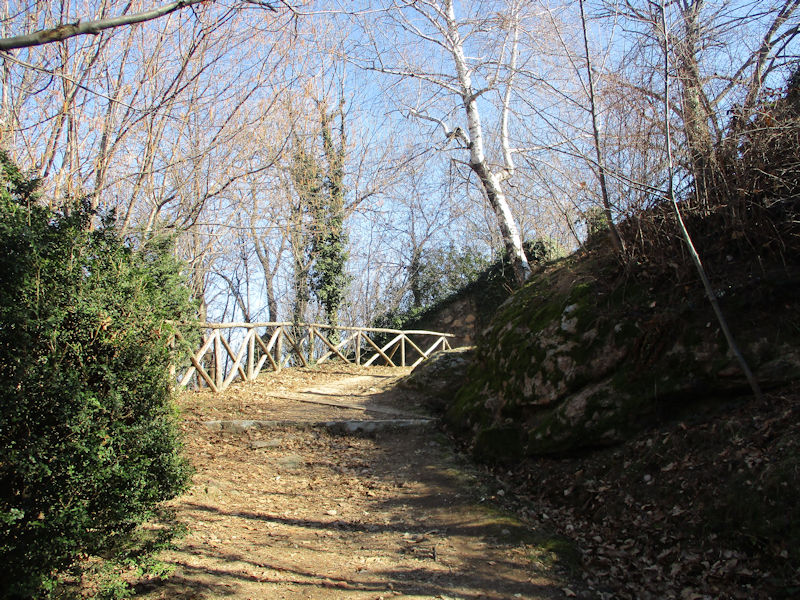
. . . like this. The "Sacri Monti of Piedmont and Lombardy" were designated as a single UNESCO World Heritage cultural property in 2003: "The nine Sacri Monti (Sacred Mountains) of northern Italy are groups of chapels and other architectural features created in the late 16th and 17th centuries and dedicated to different aspects of the Christian faith. In addition to their symbolic spiritual meaning, they are of great beauty by virtue of the skill with which they have been integrated into the surrounding natural landscape of hills, forests and lakes."
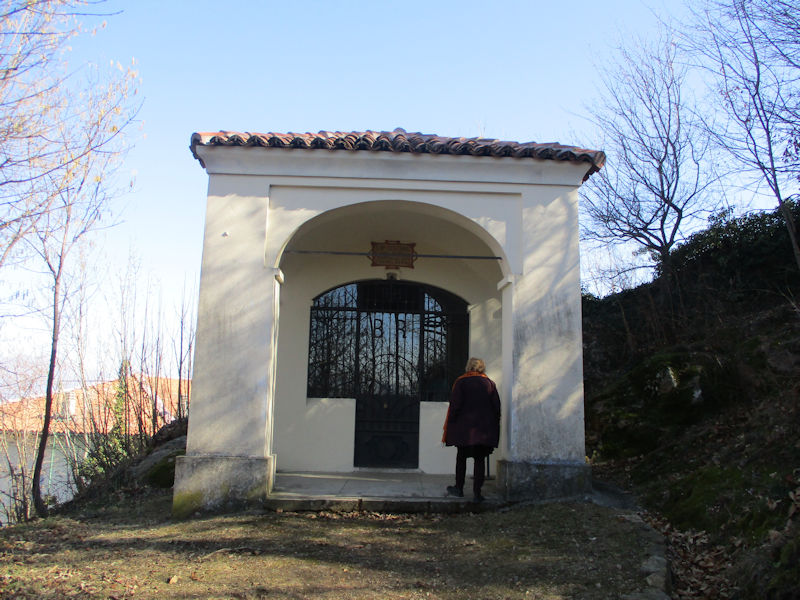
Characteristically, we've started our pilgrimage at the wrong end, with station no. 13 just above the car park, with the descent from the cross.
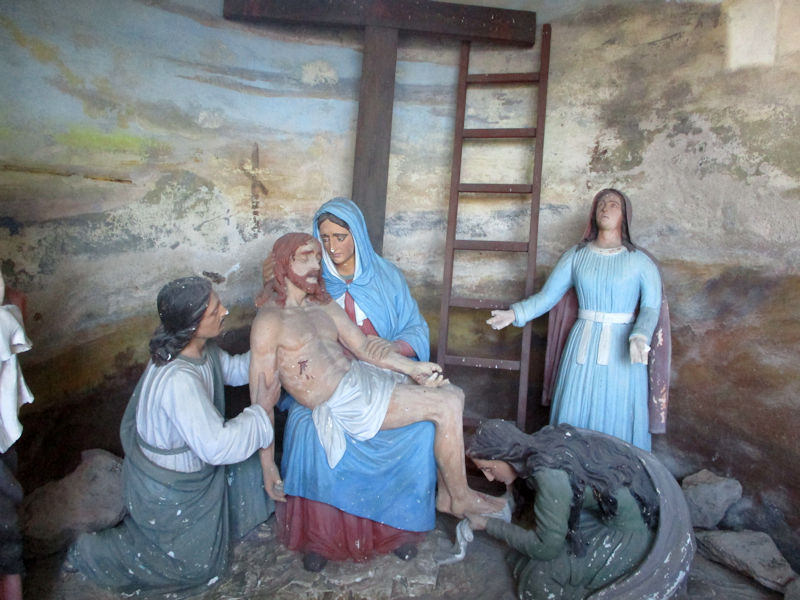
Very sad
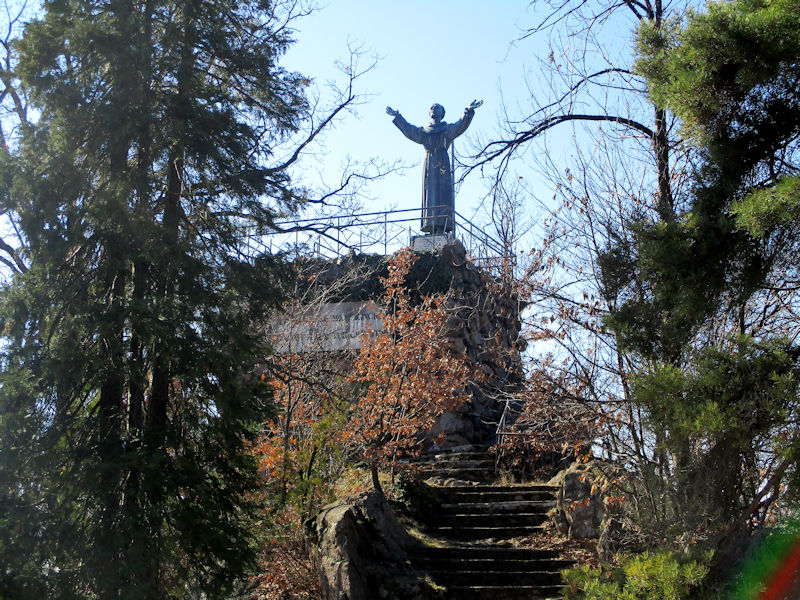
Before we continue our spiritual journey, we'll take a moment to find out what's going on up here.
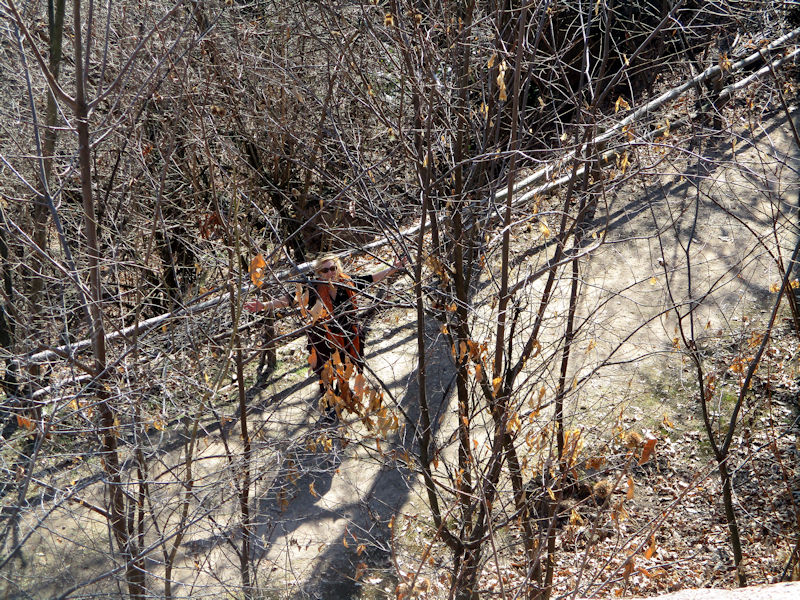
-- Wait up! This is so cool.
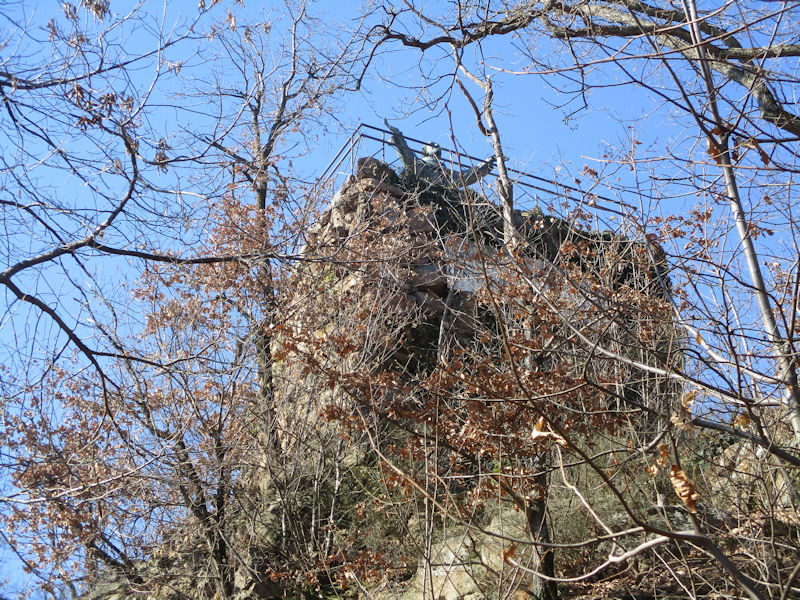
That's presumably St Francis his own good self. Perhaps getting the stigmata as we speak.
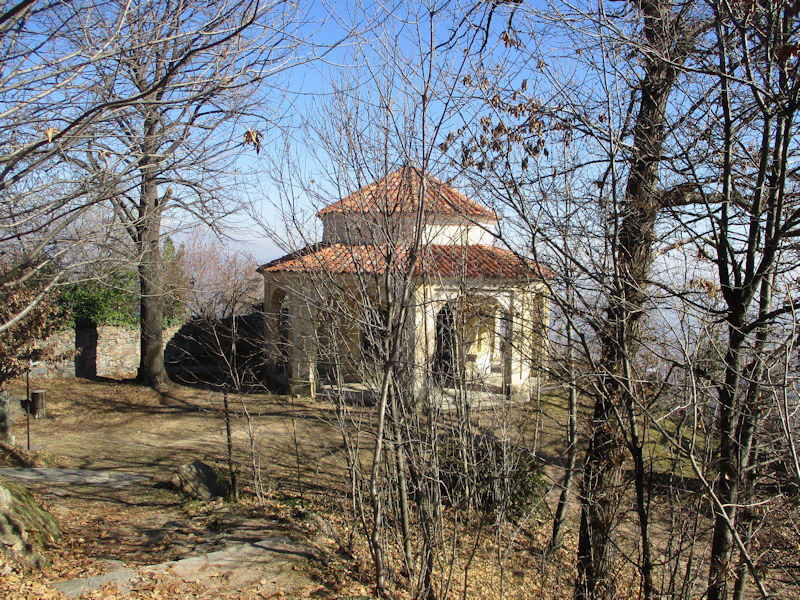
This is Station 12, a fine little octagonal hall with an arcade all the way round, built in 1715 by the community of Valperga in the first building phase of the complex, though it has partially collapsed twice, in the 18th and 19th centuries, due to slippage on the steep hillside.
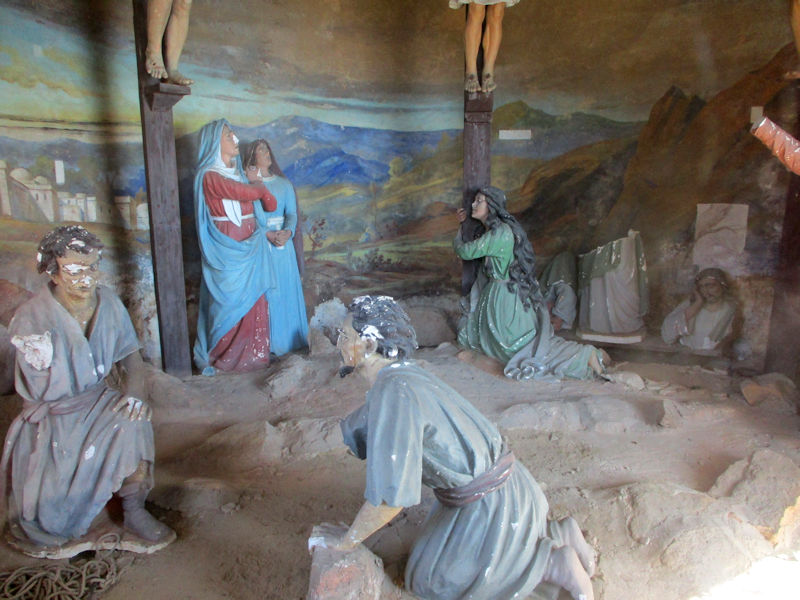
Some of the art's a little the worse for wear, especially the noses.
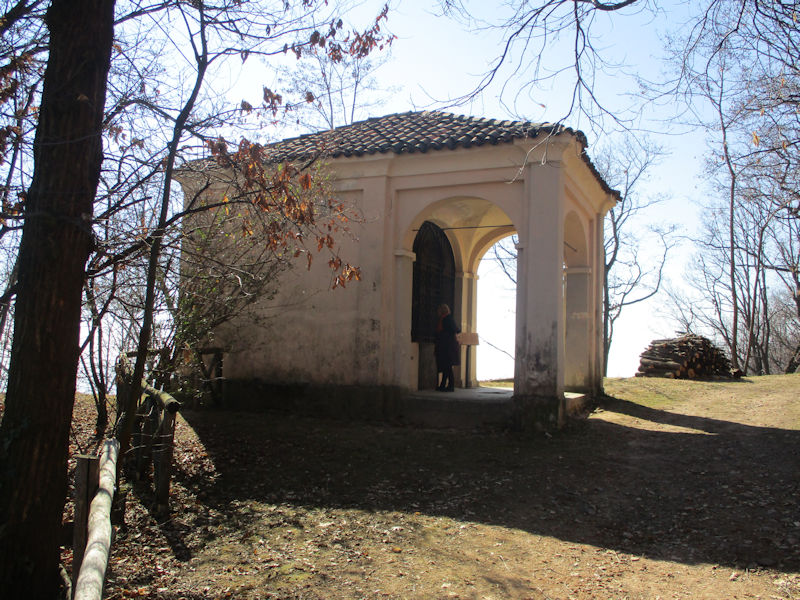
The 11th station (we're still going the wrong way round), "Jesus is crucified", was commissioned in 1714 by the commune of Rivara, which is still the chapel's patron.
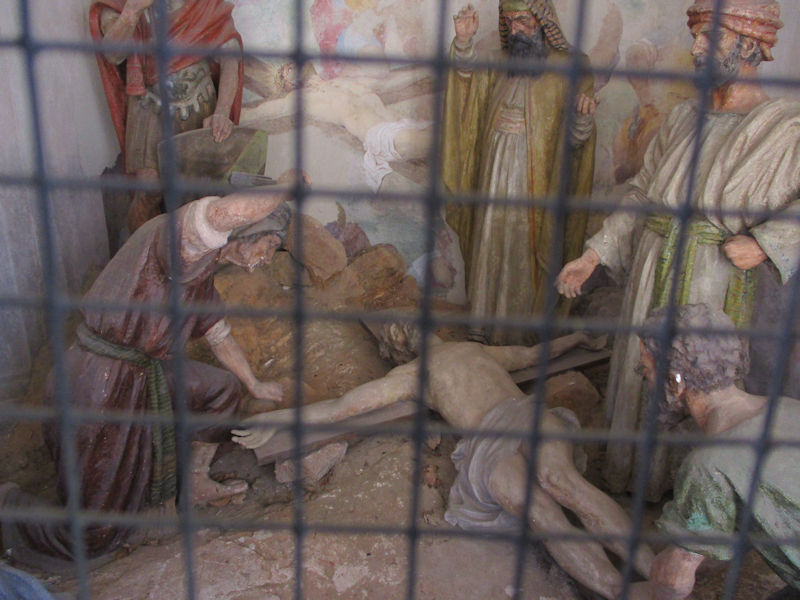
The original statues for this one were apparently replaced in the 19th century.
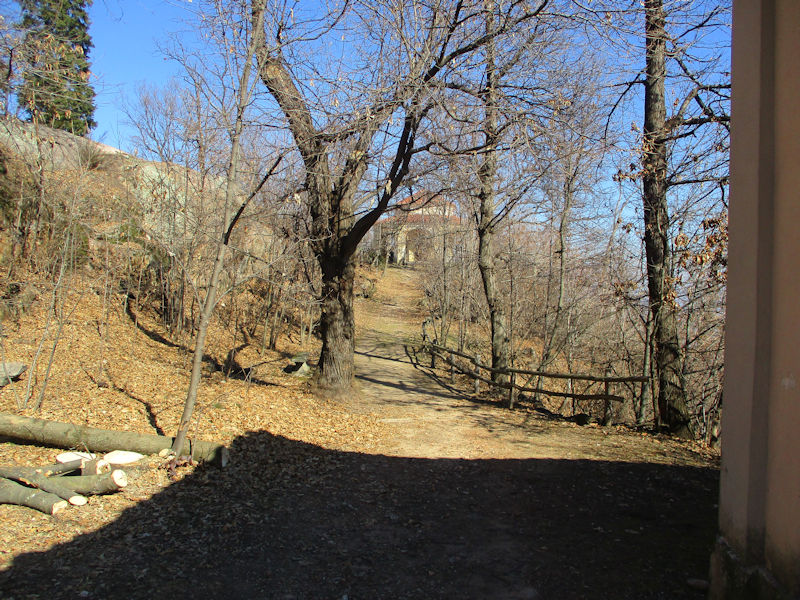
A look back up the trail at the octagonal chapel.
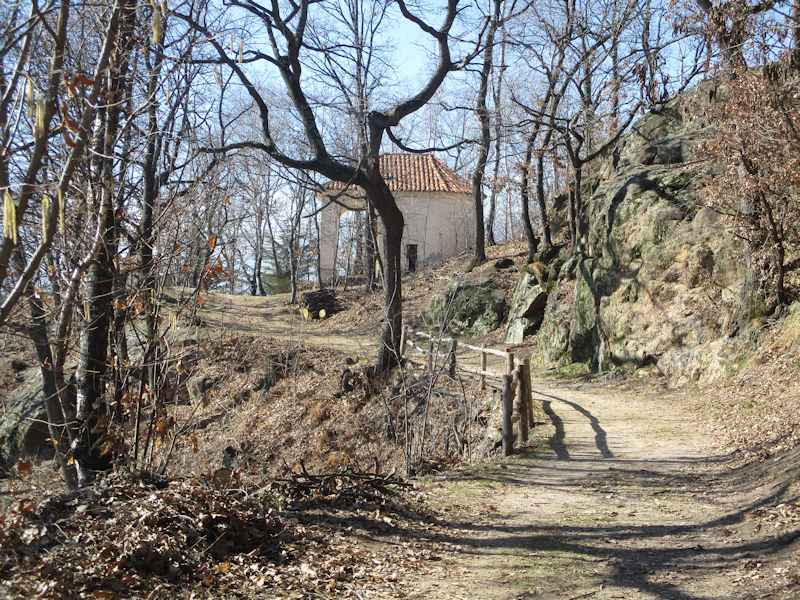
Next up, the 10th station, a circular chapel with a rectangular pronaos, dating from 1759-1765 . . .
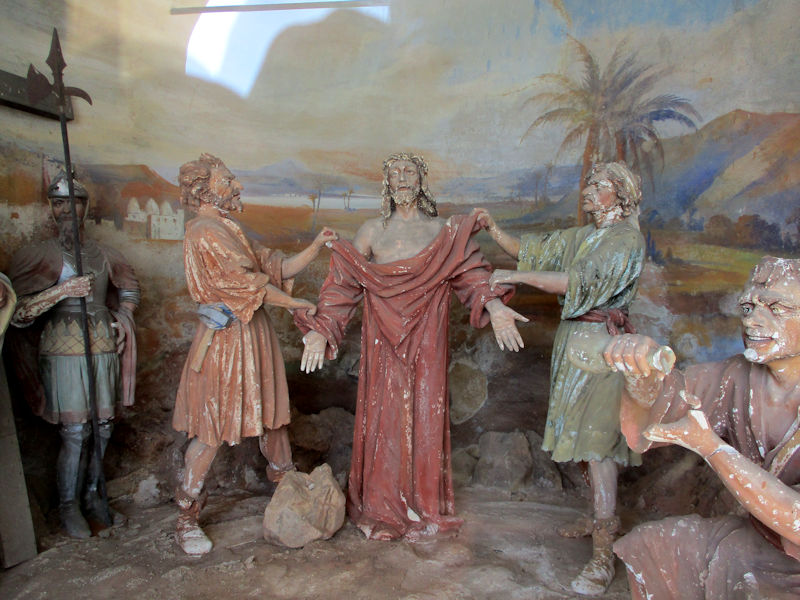
. . . with Jesus being treated roughly by some guys with big noses, whilst a Roman soldier looks on impassively.
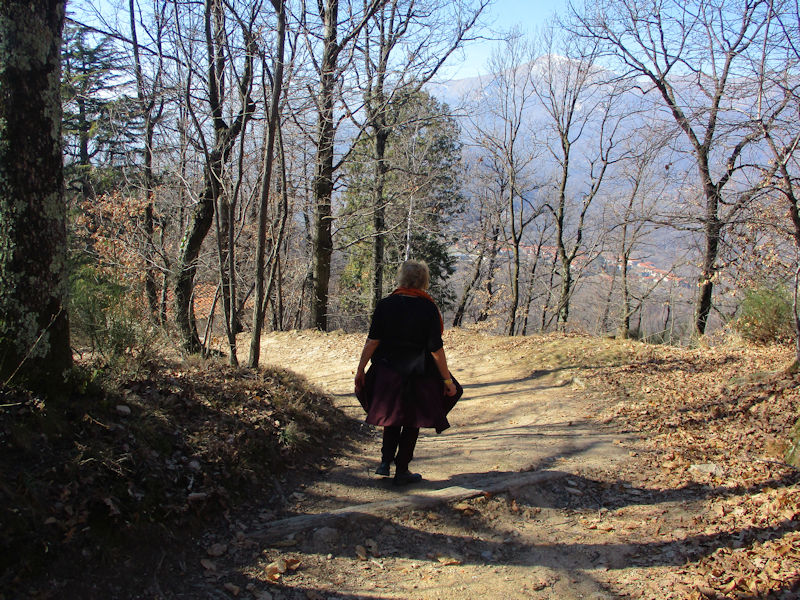
We have the place to ourselves today. Perhaps there's a seasonal shortage of pilgrims.
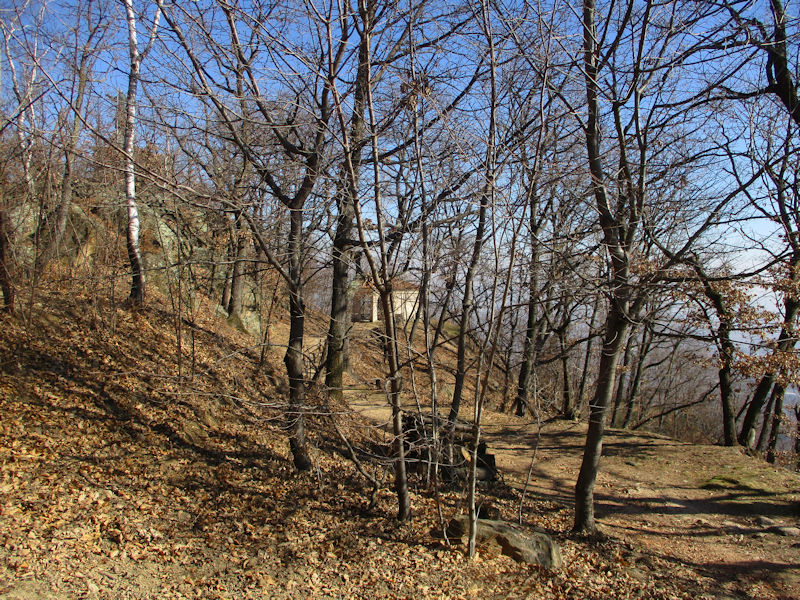
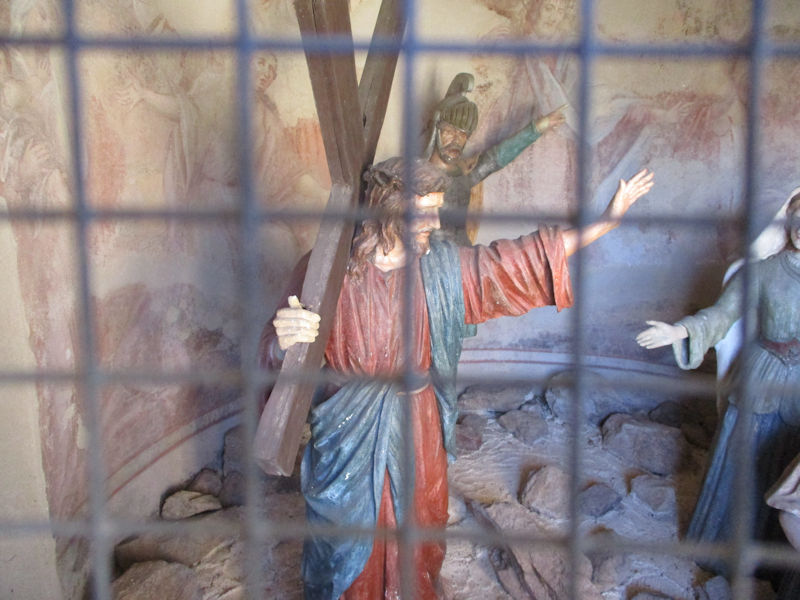
"VIII Station: Jesus meets the Pious crying women" -- begun by the sanctuary's friars in 1752 and completed in 1781 by the city council of Busano, 5km to the south. In 1905 the frescoes were given a Palestinian landscape motif, like many of the other chapels, by someone named 'Aluffo', and the five statues were restored by one 'Barengo'.
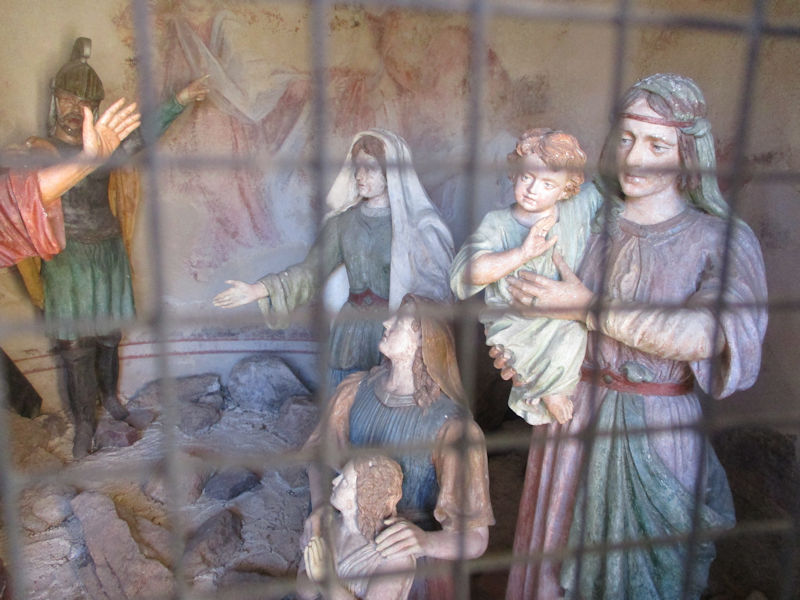
Here are the 'Pious crying women'.
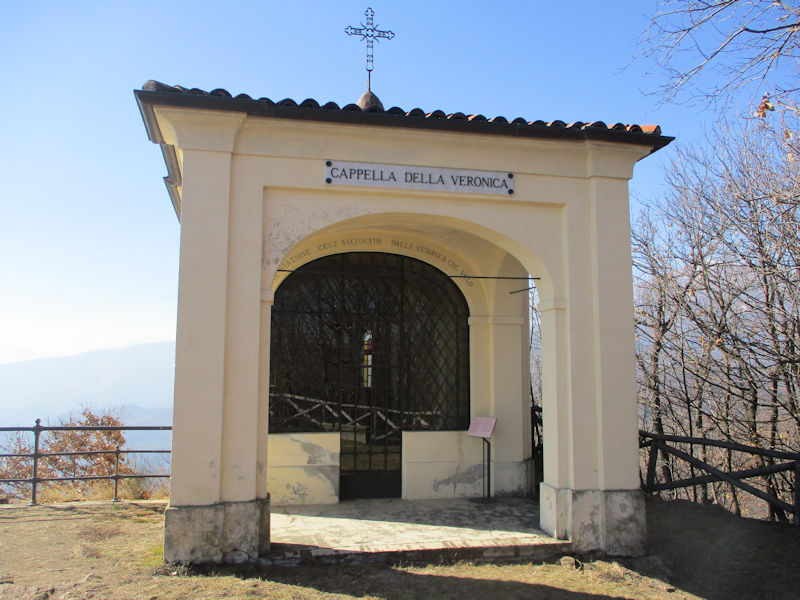
The Chapel of Veronica, where the loop turns back upon itself along the other side of the ridge, has unfortunately lost all of its furnishings.
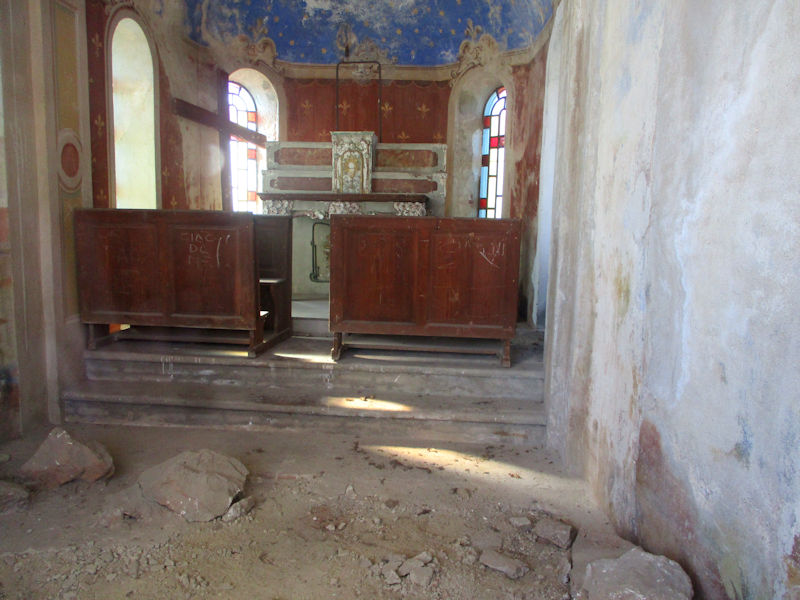
The chapel of Veronica's Veil was built by the comune of Prascorsano in 1712, but in the early 20th century a local lawyer became its patron and commissioned an apse and small belltower. The painted plaster statues have unfortunately been shattered by vandals, but the exterior was restored in 1993, and a 'large antitheft window' added (a bit late).
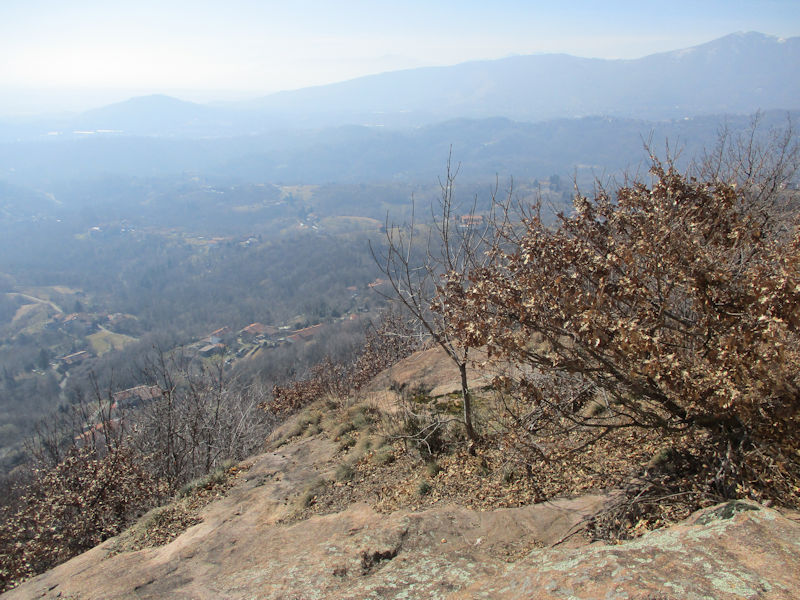
The view from the end of our loop
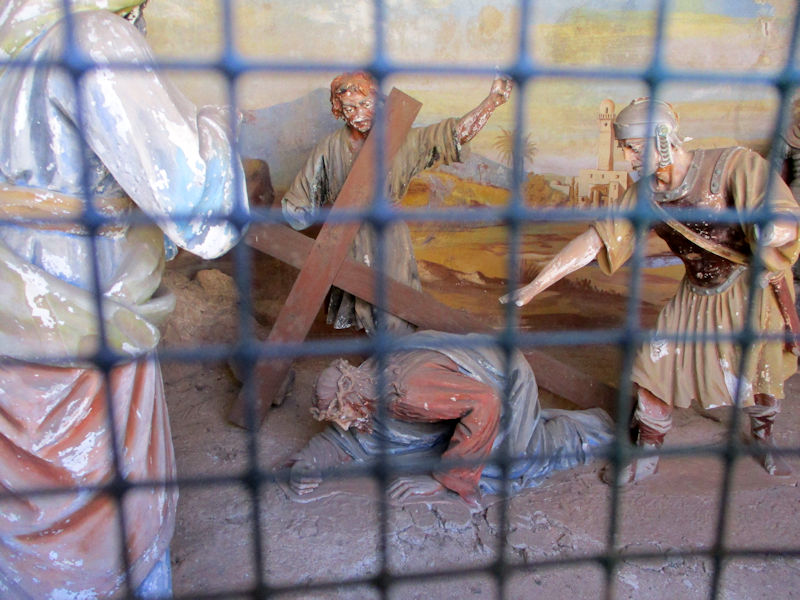
Jesus evidently fell down a few times under the weight of the cross, and this represents the second time. The chapel was begun in 1715 but left unfinished until in 1773 Count Ignazio of Valperga commissioned more frescoes from 'Grosso from Ivrea'. Aluffo provided his Palestinian landscape frescoes here too, in 1905, and Barengo restored the statues in the same year.
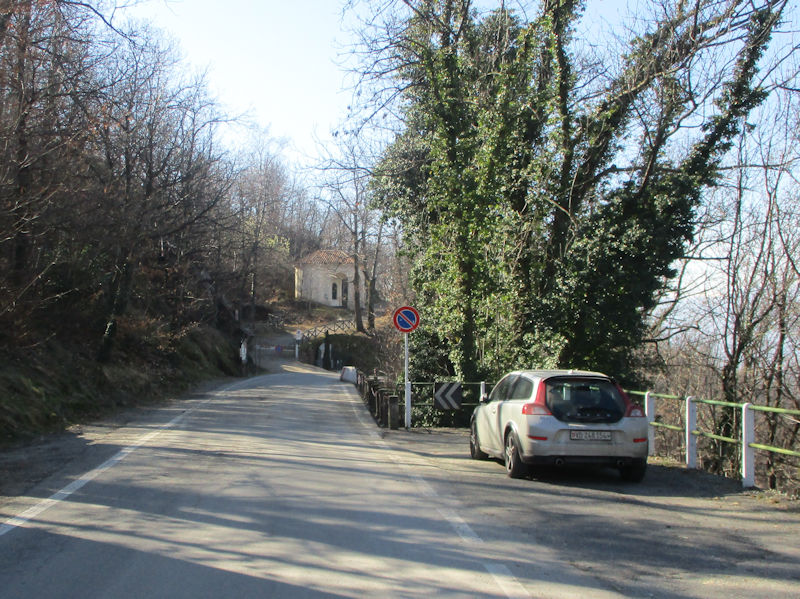
Rather that provide indifferent photos of any more of these chapels, which after all are very much like one another to the secular eye, we'll see if we can get back down this mountain road safely.
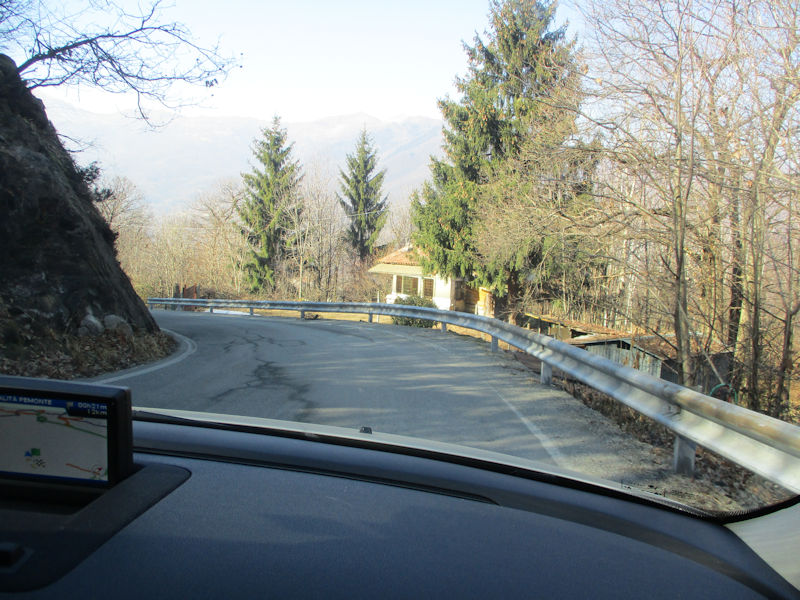
So far, so good, but . . .
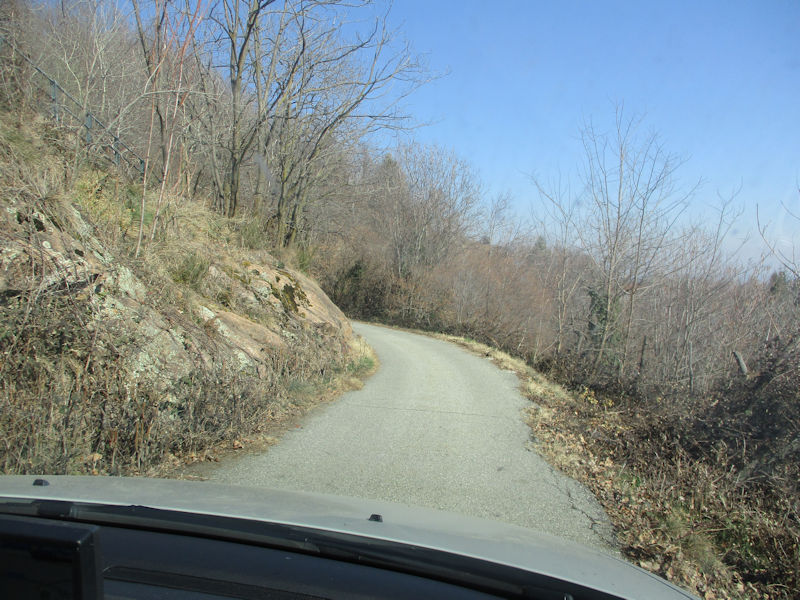
. . . our Volvo GPS navigator is treating us to another of its little pranks.
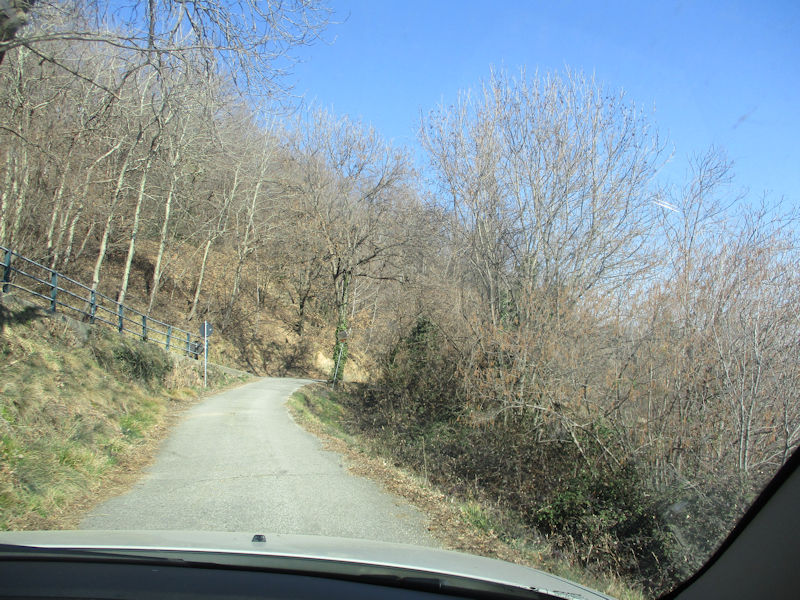
Hang on tight.
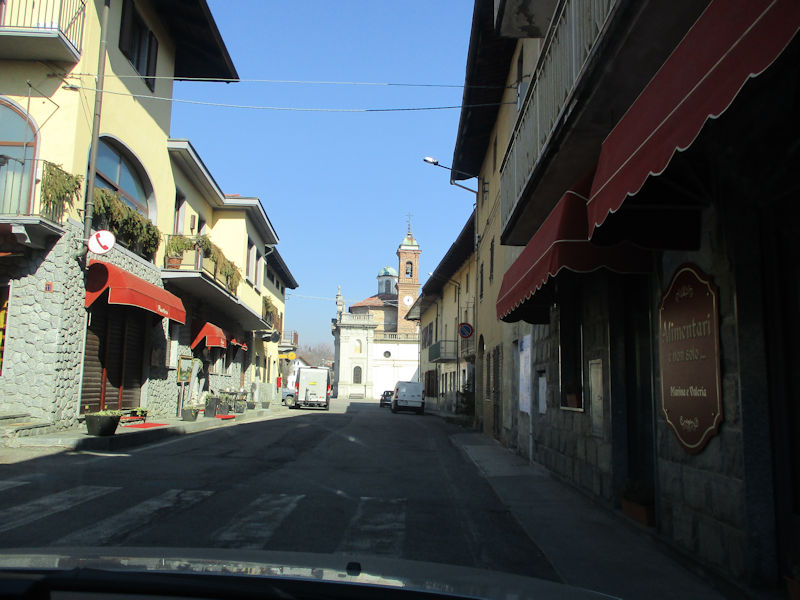
Back to ground level, thankfully. This is probably downtown Valperga.
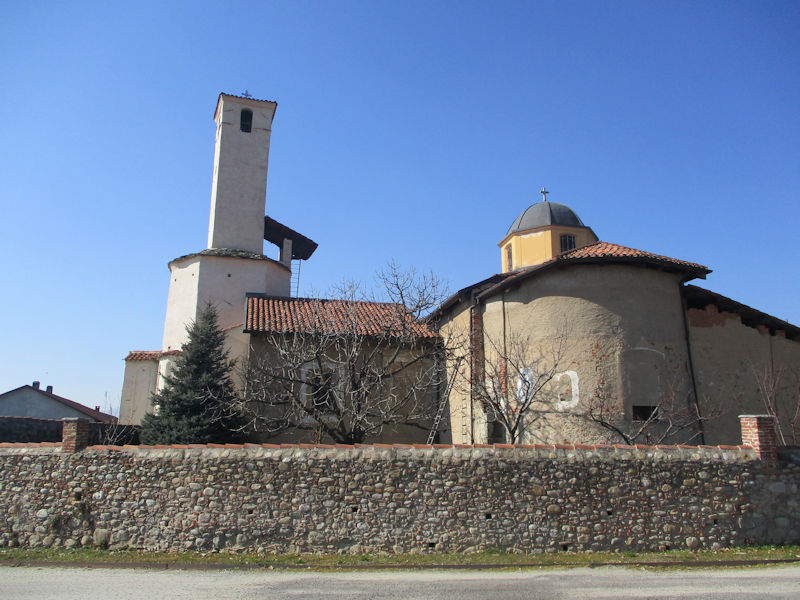
We've just passed through the tiny comune of San Ponso, 256 inhabitants (who are known as the Samponesi), home of the annual Sagra delle Rane (Festival of the Frogs, which coincidentally is going on right now as I write this on 21 April), and we almost flew past this at just above the recommended speed limit.
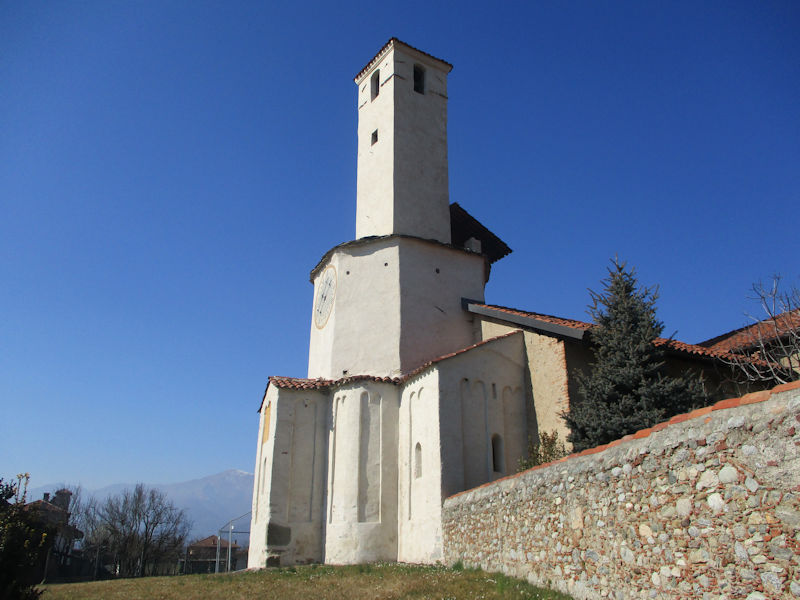
It's the amazing Romanesque Baptistery of San Ponso from the late 10th or early 11th century, octagonal but with a square belltower from 1585 built incongruously right out the top of its dome.
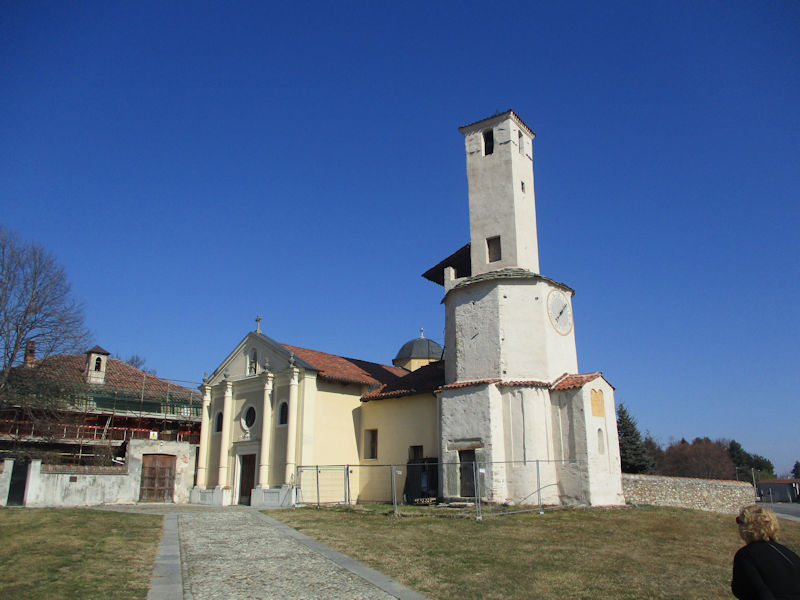
Apparently it's well known as 'an important historical testimony of the development of Romanesque architecture in the upper Canavese' (Italian Wikipedia). The adjacent parish church has replaced the Romanesque original. The site upon which it stands has turned up tombstones from a Roman cemetery from the 1st and 2nd centuries AD, when it was occupied as an agricultural settlement for retired veterans of the Roman legions.
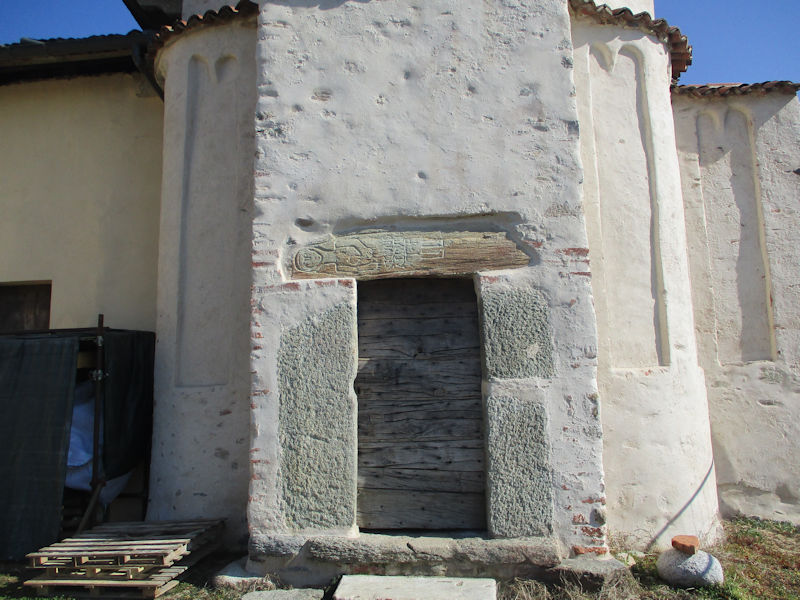
The rustic baptistery door sports an architrave of a stone block from Roman times with a crude figure of a recumbent woman clutching her purse in front of her.
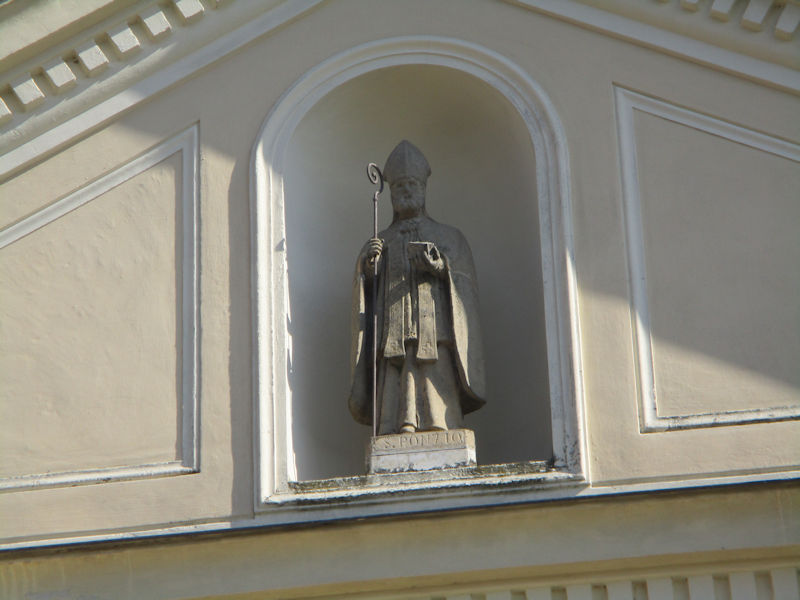
That's San Pons, or Ponzio, or Pontius, who may have been meant to recall St Pontius of Cimiez near Montpelier, France, martyred in 257 we're told, the patron saint of herbalists and beekeepers, or rather Pontius the Deacon, similarly of the mid-3rd century, a saint and author from Carthage who wrote a biography of Cyprian, the Berber Bishop of Carthage, one of the 'Latin Church Fathers'. We have a choice, apparently (but the bishop's crozier suggests that this is the Deacon).
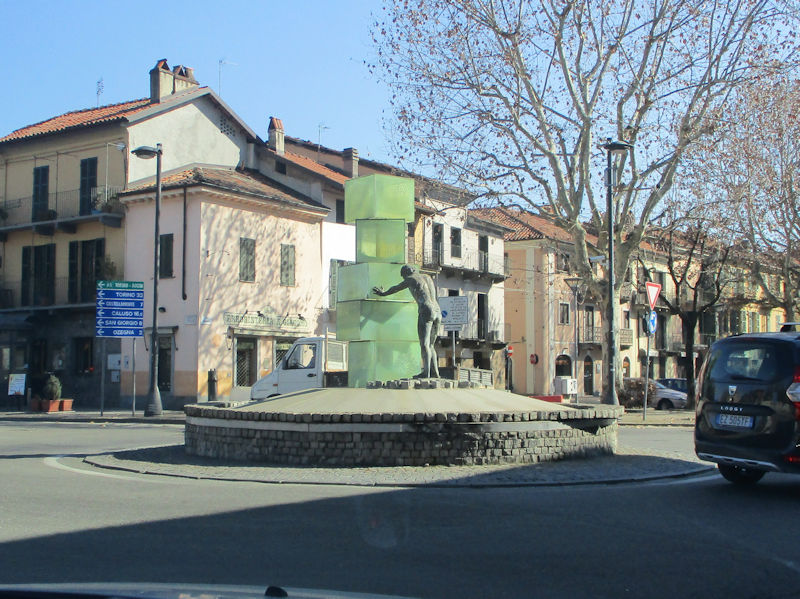
We've progressed about 4km down the river Orco to the somewhat pleasant town of Rivarolo, about 26,000 residents, still within the Piedmont's Metropolitan City of Turin jurisdiction, and we have no comments to make about the figure in the giratoire.
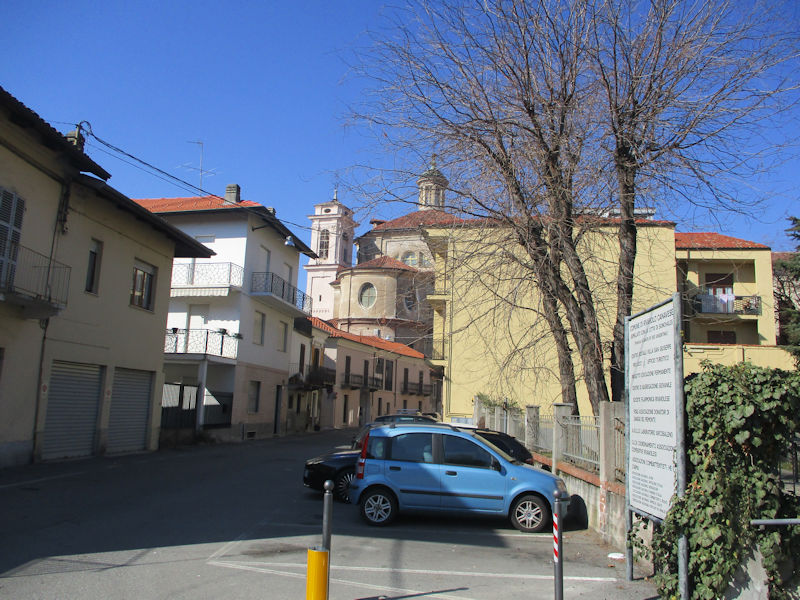
As usual we are heading as quickly as possible for whatever passes for the Centro Storico; after all, suburbs are suburbs.
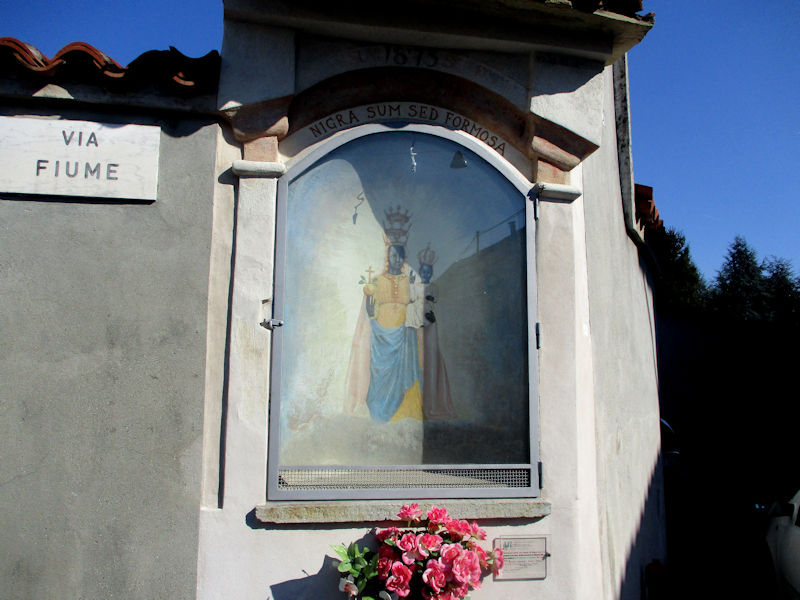
"I'm black but beautiful" (and I get to wear this ridiculous crown)
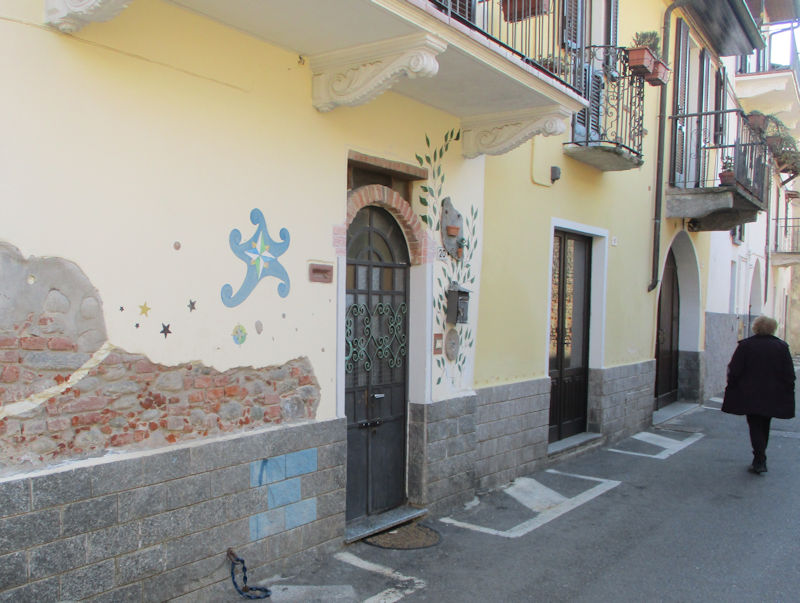
Sadly, entirely unknown to us, a block from here on the Via Fiume still stands, in its city park, the Castello Malgrà, built in the 1330s by the Count Martino di San Martino, a member of the feuding rival family with the Valpergas, owned by the Valperga a century a later, until in 1571 the Rivarolesi invited the Dukes of Savoy to come in and ensure the peace. The castle was renovated in 1885 and has been owned by the city since 1982.
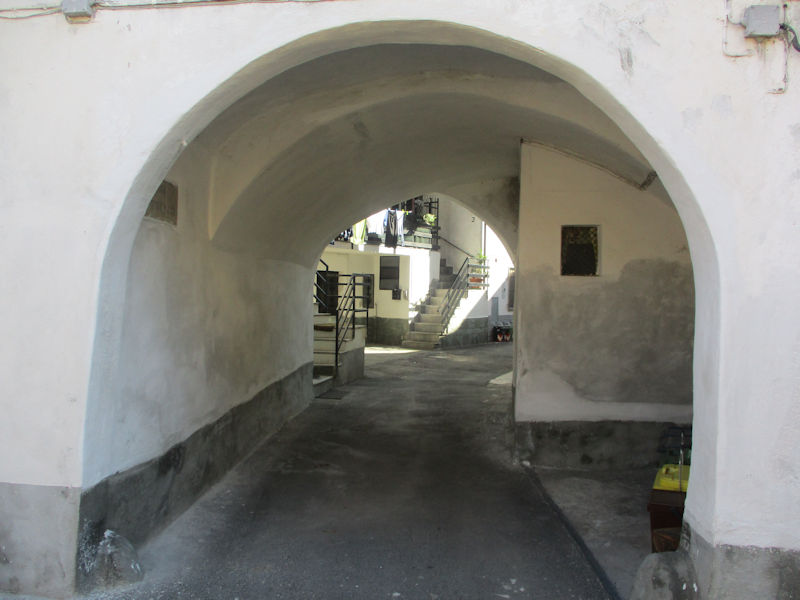
During the Middle Ages, Rivarolo (the name suggests the Latin Riparolium, a small place on the shore of a river, in this case the Orco) was caught amongst the constant rivalries of the local lords like the Marquis of Monferrato, the Counts of Savoy and the Princes of Savoy-Achaia.
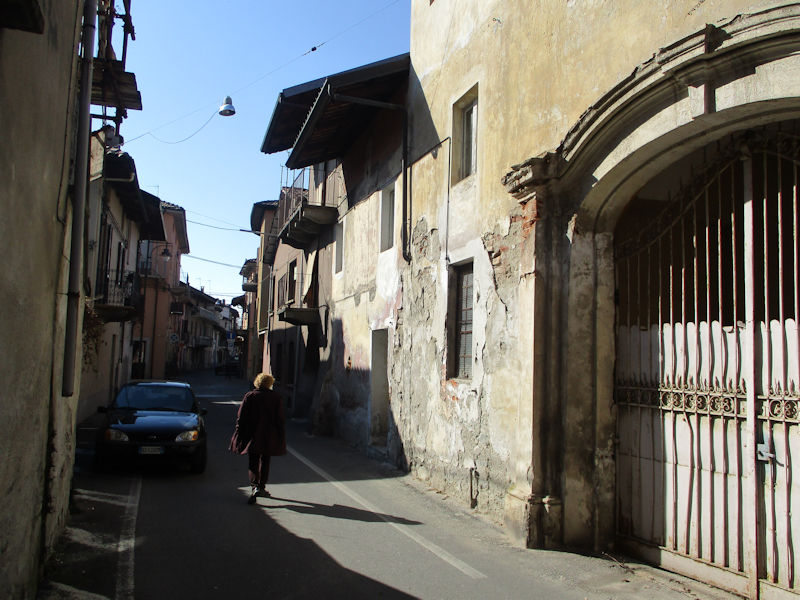
In 1362, following the Peace of Brétigny in the French/English Hundred Years War, one of the so-called 'companies' of demobilized soldiers who'd formed themselves into mercenary private armies, the White Company of Alberto Sterz and 'Giovanni Acuto' (Sir John Hawkwood), hired by Monferrato to protect him from the Milanese, occupied Rivarolo as a base for some time.
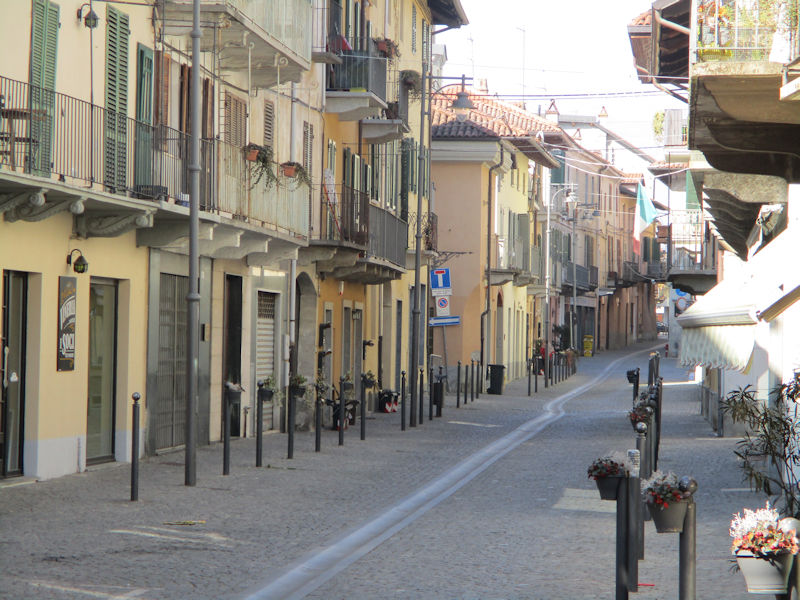
Rivarolo street scene, on the Via Maurizio Farina
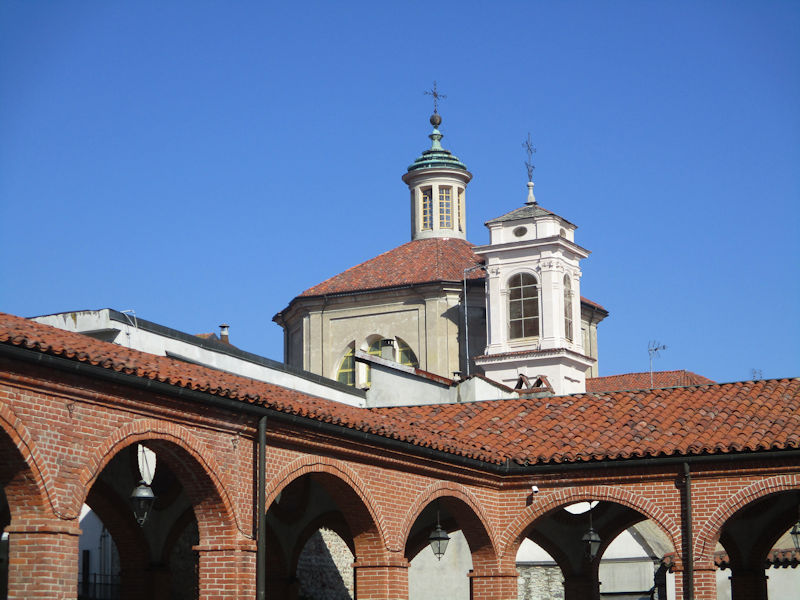
Looking over the carpark of the Piazza Litisetto at the Chiesa di San Michele Arcangelo
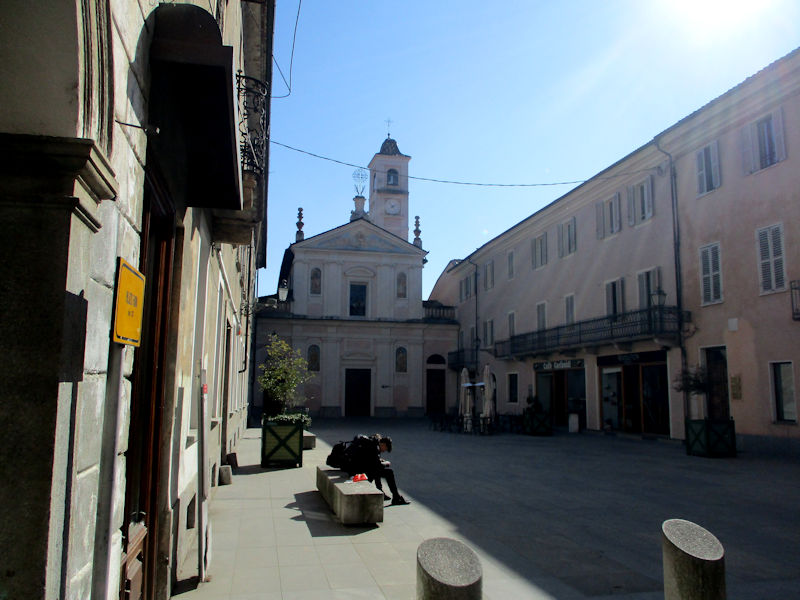
The Chiesa della Confraternita S. Rocco in the Piazza Giuseppe Garibaldi
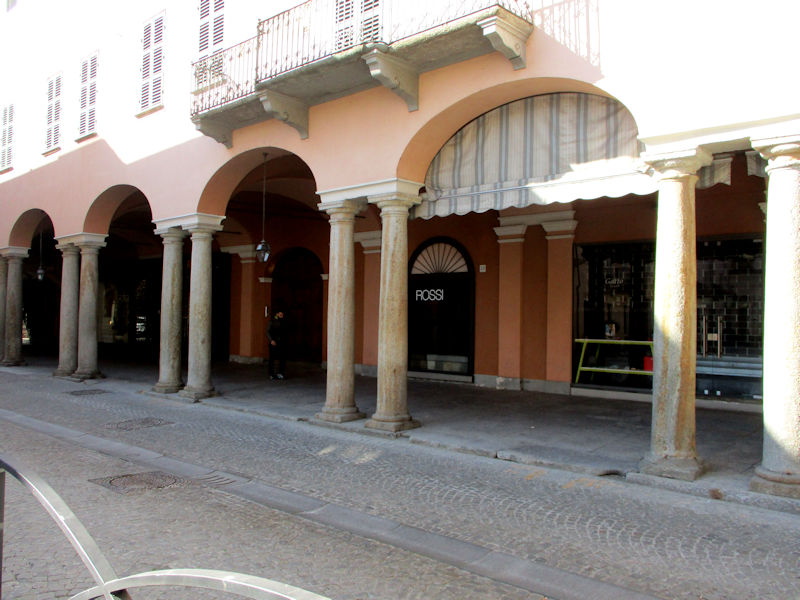
Along the Via Ivrea
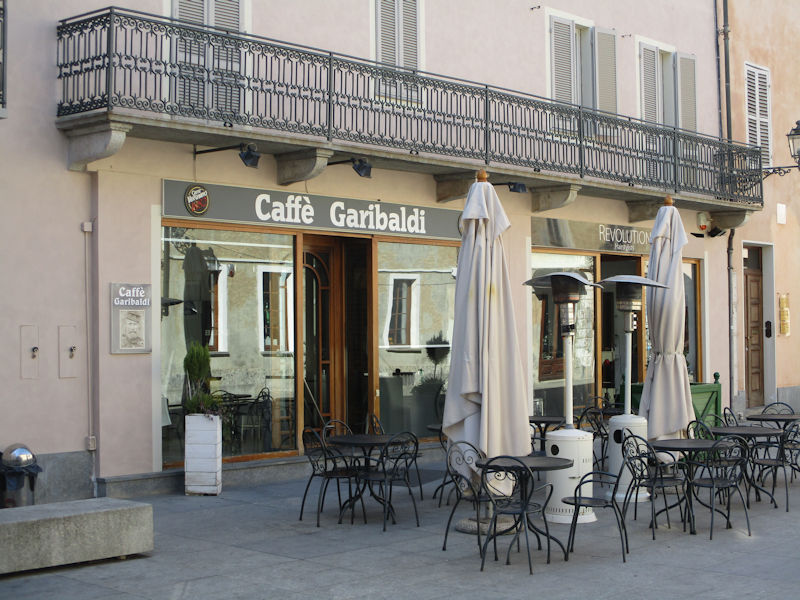
[sans paroles]
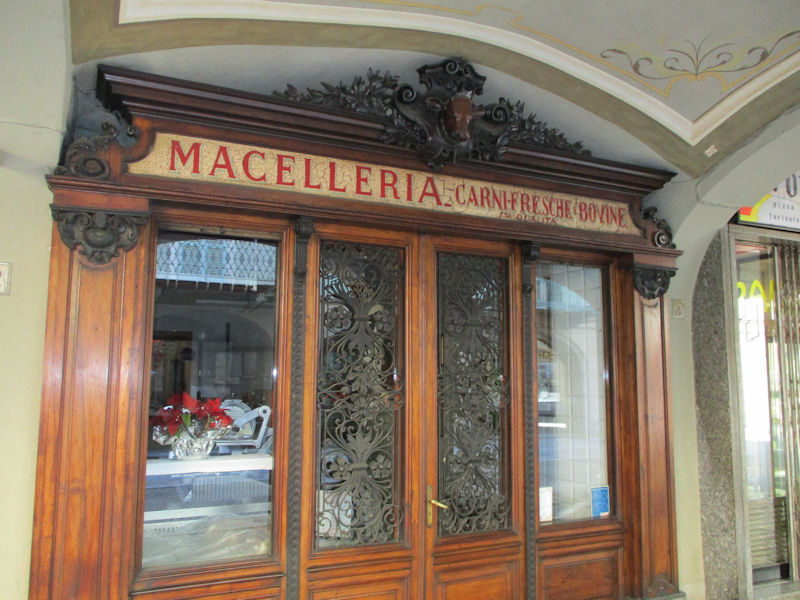
Street scenes along the Via Ivrea
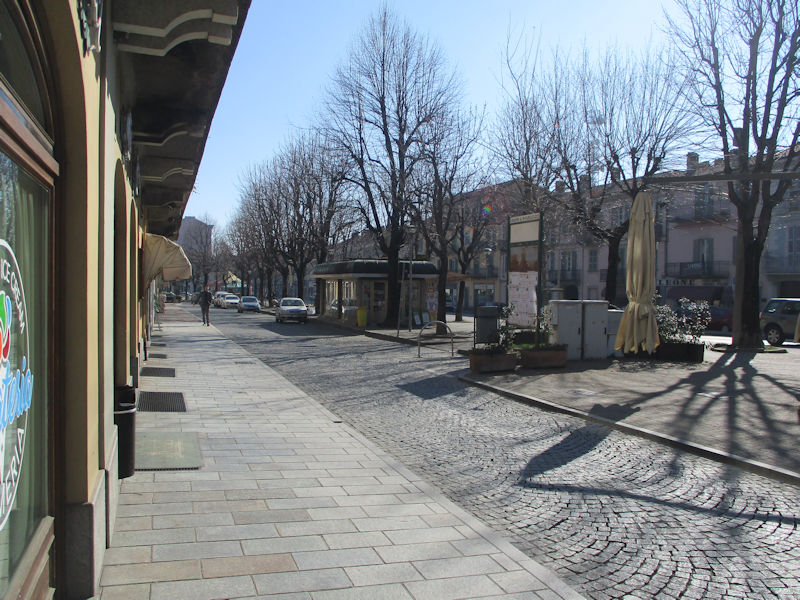
The Corso Torino at the western edge of the Old Town
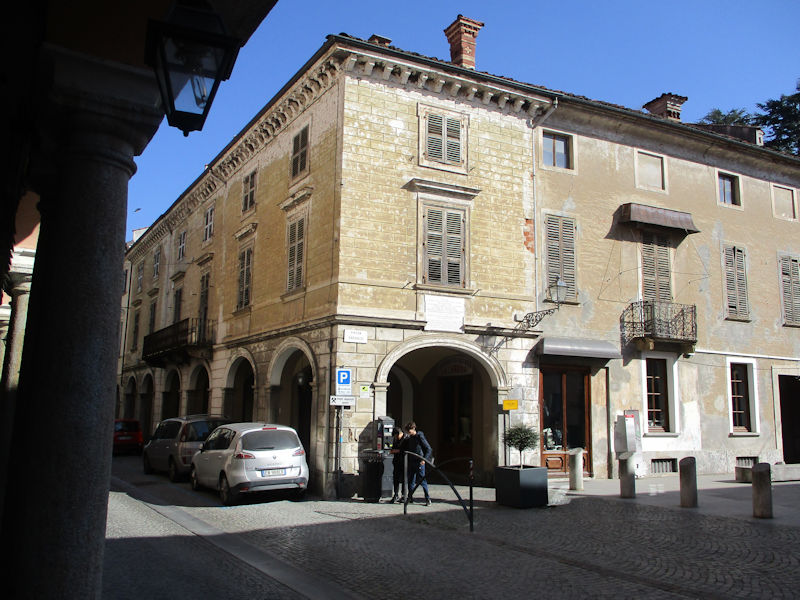
Back past the Piazza Garibaldi
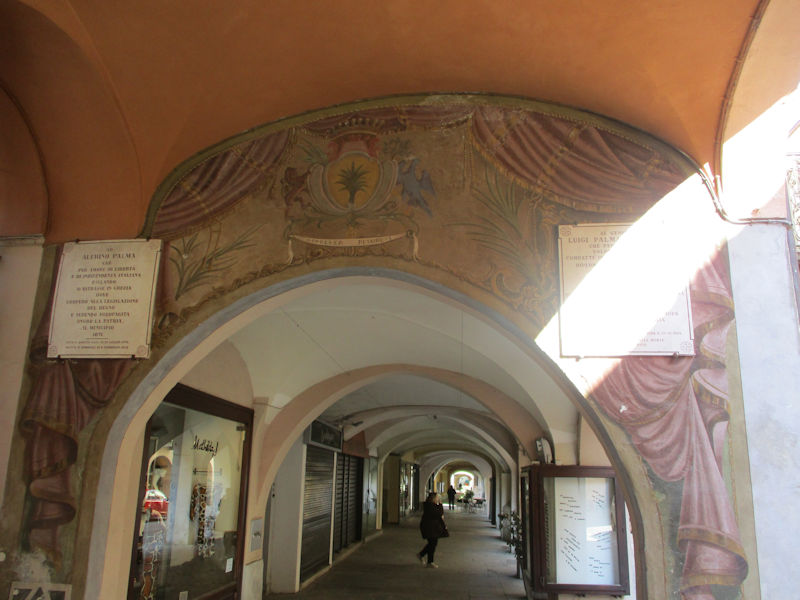
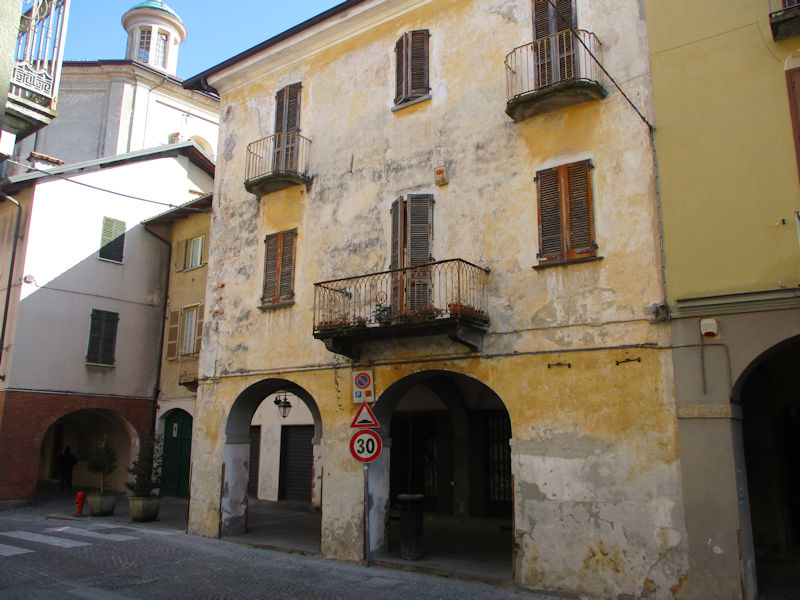
Street scenes
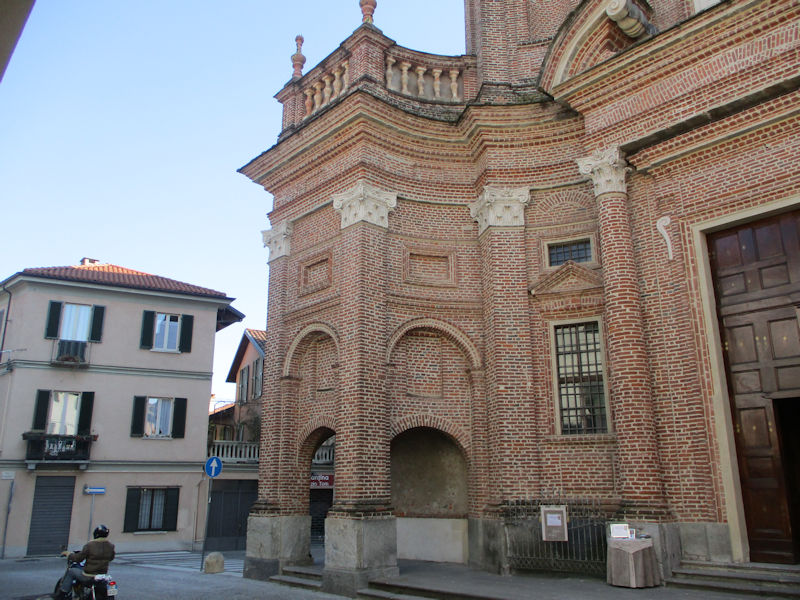
The Chiesa parrocchiale di San Michele Arcangelo
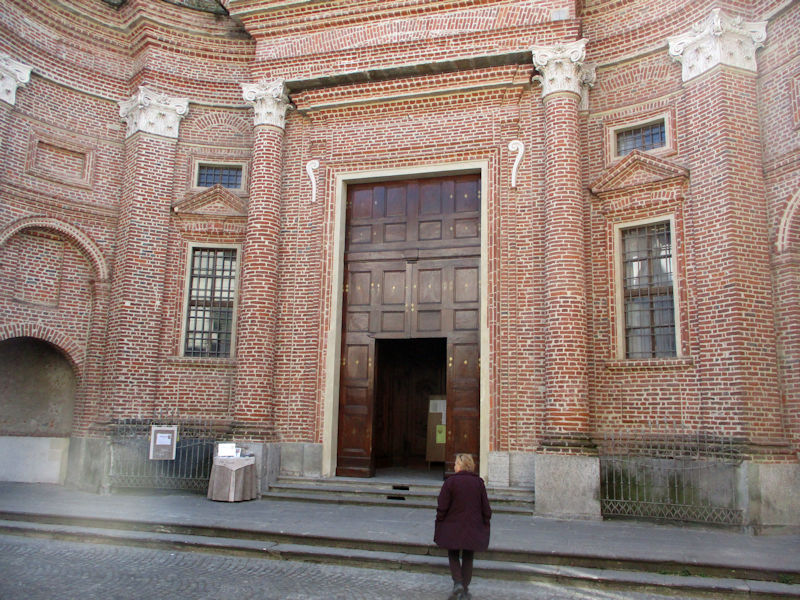
It doesn't look too promising, from our usual point of view, but we'll have a go.
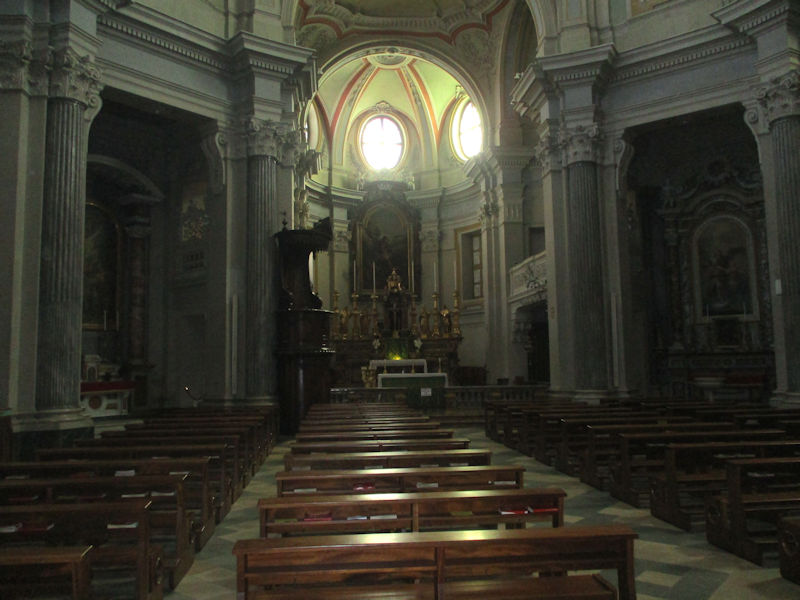
And on that note, we'll fetch the car and return to the Vecchio Mulino in Biaro.
Next up: The Vecchio Mulino, the Castello di Pavone, and the road over the Alps





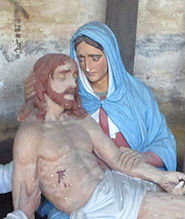 Dwight Peck's personal website
Dwight Peck's personal website




































































